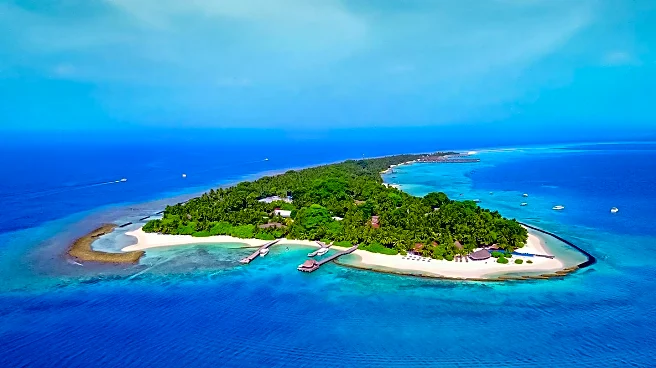What's Happening?
The global film tourism market, driven by the trend known as 'set-jetting,' has reached $66 billion in 2025 and is projected to grow to $145 billion by 2035. Set-jetting involves travelers visiting locations
featured in popular movies and TV shows, transforming these sites into major tourist attractions. This trend is reshaping the international tourism industry by boosting local economies, showcasing lesser-known destinations, and challenging these places to balance rapid growth with sustainability. Locations like Dubrovnik, Croatia, and New Zealand have seen significant increases in tourism due to their appearances in 'Game of Thrones' and 'The Lord of the Rings,' respectively.
Why It's Important?
Set-jetting is becoming a significant force in experiential travel, influencing tourism patterns and economic growth. It provides substantial economic benefits to local communities by increasing visitor numbers and spending. This trend helps destinations become more resilient to economic downturns by diversifying revenue streams. However, it also poses challenges such as managing overtourism and preserving cultural heritage. The phenomenon highlights the power of media in shaping travel desires and underscores the importance of strategic planning to maximize benefits while minimizing negative impacts.
What's Next?
Destinations looking to capitalize on set-jetting are advised to take strategic approaches, such as creating themed trails and partnering with studios for marketing campaigns. The integration of augmented reality and AI could further personalize travel experiences, allowing travelers to immerse themselves in their favorite stories. As set-jetting continues to grow, less well-known destinations may gain popularity, driven by the desire for unique experiences. The trend is expected to contribute to an $8 billion increase in tourism by 2026, with locations featured in popular media leading the way.
Beyond the Headlines
Set-jetting not only boosts local economies but also encourages cultural preservation and pride. It offers a unique way for travelers to connect with stories that resonate with them, turning travel into a personal and profitable experience. However, destinations must manage the potential 'Disneylandification' effect, where excessive tourism can alter the character of a location. By implementing eco-friendly guidelines and empowering locals as storytellers, destinations can ensure sustainable growth and long-term benefits.











